DMZ/JSA Tour
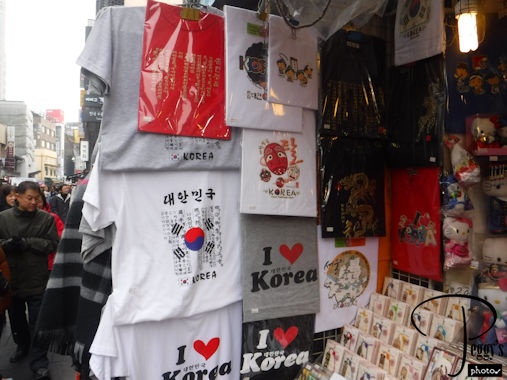
I made a stopover in Seoul, South Korea, on my way to Bangkok, Thailand, because I wanted to take a tour of the Joint Security Area (JSA) and the Demilitarized Zone (DMZ) on the border between North and South Korea. To do so, after I reserved the tour, I had to send a color copy of my passport for approval––a UN requirement. After approval, I received an email from the tour company of the rules for going on the JSA part of the tour: Don’t touch any equipment belonging to the communist side; do not speak with, make any gesture toward, or in any way approach or respond to personnel from the other side; no shorts; skirts/dresses need to cover the knee; no sandals, flip–flops, or slippers––shoes must cover the whole feet; no T–shirts, shirts must be collared; no shaggy or unkempt air; and no cameras with over a 90mm zooming lens.
My tour was scheduled on January 16. About a week before I left for South Korea, the UN closed the JSA because of the nuclear bomb that North Korea had set off. I was rescheduled on a tour that just went to the DMZ. Then the JSA was reopened and I was put back on my original tour. But then the North Koreans flew a drone over the border and the UN closed both the JSA and the DMZ to visitors. So I didn’t get to go on the tour.

DMZ/JSA Tour
Metro Hotel
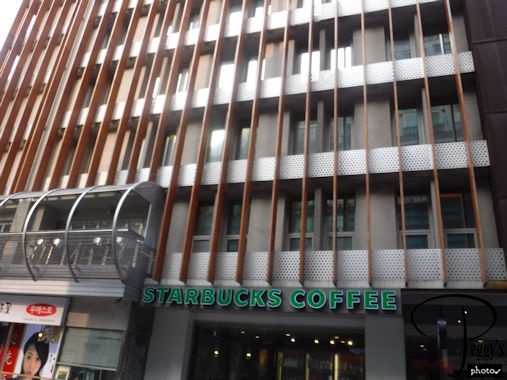
I arrived at the Inchon Airport––about an hour away from Seoul––early evening. To get to my hotel in Seoul, I took the set–priced international taxi (Seoul foreign language taxi)––about $55. I also arranged with my taxi driver to pick me up at my hotel in three days for my departure. Of perhaps interest to some, if you make Seoul a transfer point on flights to Asia, there are tours from the airport to both Inchon and Seoul.
I stayed at the Metro Hotel, in the photo, which was located in the Myeongdong area of Seoul in an area of restaurants and shopping. My room was very nice, which included an overhead shower and a heated toilet seat. The hotel offered an adequate breakfast buffet.
There were two Starbucks near the hotel––one adjacent to it and one across an alley. In 2014, there were more Starbucks in Seoul than in any other city in the world––284. You see Starbucks everywhere. But coffee is about twice the price in Seoul as it is in the U.S. and it is a Korean status symbol to walk around with a Starbucks cup in your hand.

Metro Hotel
Seoul Walk
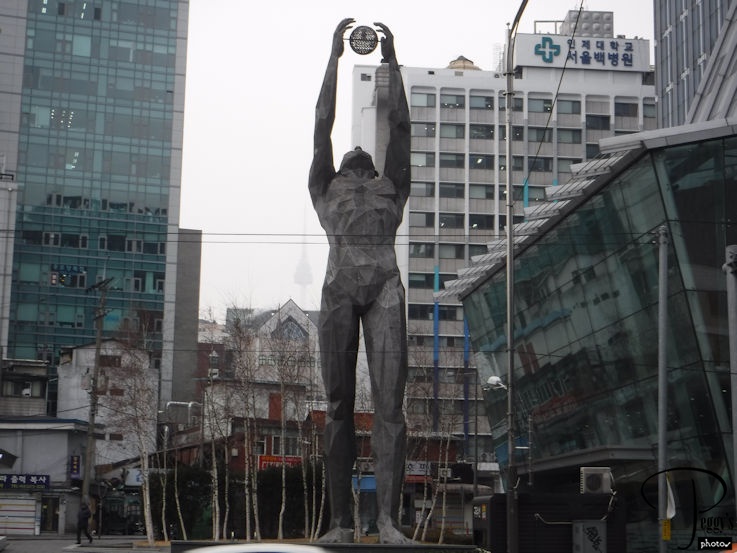
Since my JSA/DMZ tour was canceled, I had a free day. I decided to take the hop–on hop–off bus around Seoul, that is if I could find the nearby stop for it. I walked around for about 45 minutes with the hotel’s map, plus asked directions from store keepers, and couldn’t find the stop. So I took a taxi to my destination. I took three taxi rides this day and each was less than the cost of a Starbucks cup of coffee.
It was winter time in South Korea and it was lightly snowing on my walk. Photo: seen on my walk.

Seoul Walk
Seoul Walk

Also seen on my walk.

Seoul Walk
Changdeokgung Palace
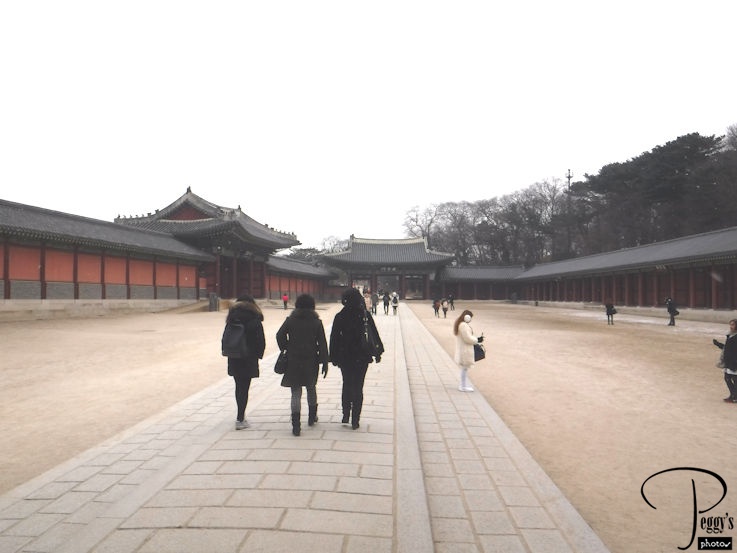
My taxi dropped me off at Changeokgung Palace. The palace is one is one of the “Five Grand Palaces” built during the Joseon Dynasty (1392–1897). It was built in 1405 and is an UNESCO World Heritage Site. The palace was burned down in 1592 during the Japanese invasion, rebuilt in 1592, and heavily damaged during the Japanese occupation (1910–1945). Its restoration was begun in the 2000’s.

Changdeokgung Palace
Changdeokgung Palace
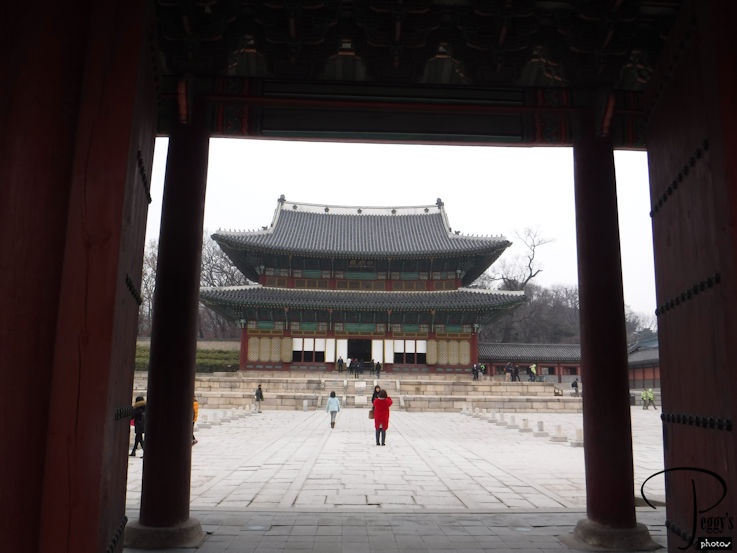

Changdeokgung Palace
Changdeokgung Palace
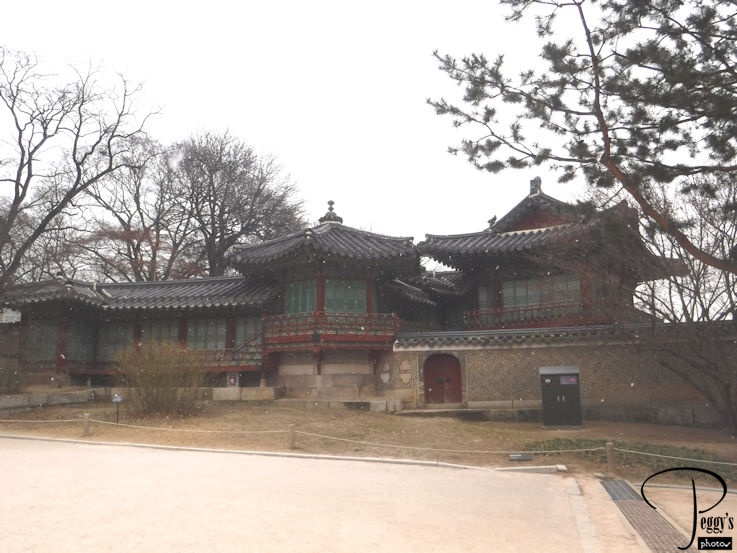
Palace buildings.

Changdeokgung Palace
Changdeokgung Palace
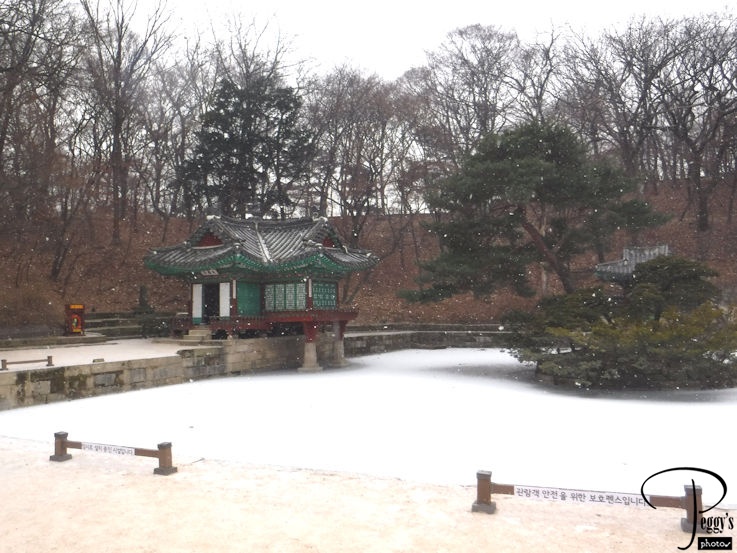
The Buyongjeong Pavilion in the Secret Garden, which was used by the royal family and palace women. It was snowing more heavily now.

Changdeokgung Palace
Changdeokgung Palace
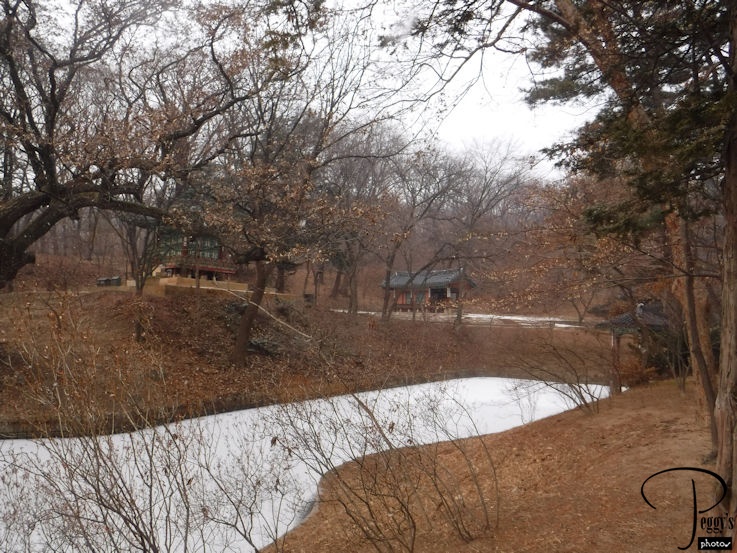
The grounds of the Secret Garden. The time to visit here would be the spring when much of it is in bloom.
I have put my photos of Changdeokgung Palace on a slide show:
http://www.peggysphotos.com/changdeokgung–palace–seoul/
(Slide Shows, Asia, South Korea, “Changdeokgung Palace, Seoul”).

Changdeokgung Palace
Insadong Street
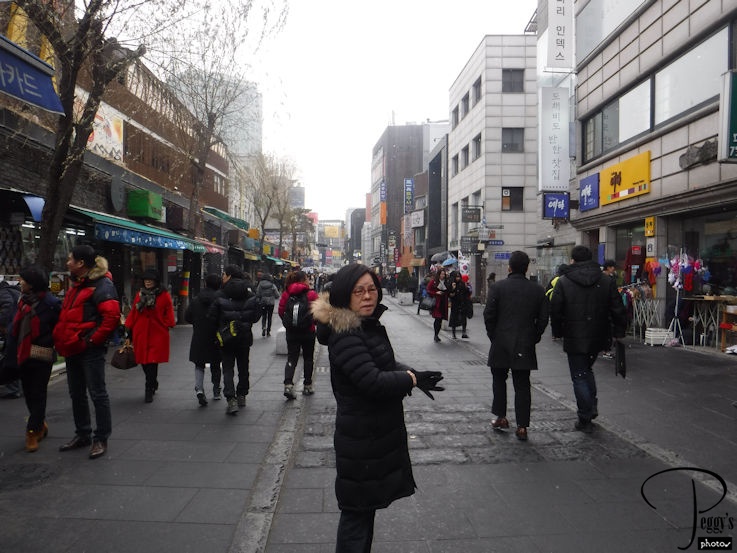
After visiting Changdeokgung Palace, I took a taxi to Insadong Street, a traditional Korean street with stores selling Korean art, paper, and tourist items, restaurants, and also street food. On weekends, it is a pedestrian street.

Insadong Street
Insadong Street
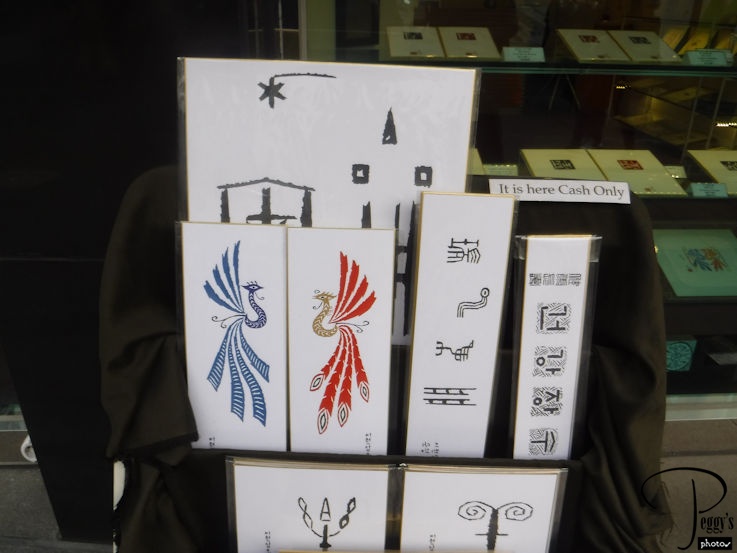
Korean art.

Insadong Street
Insadong Street
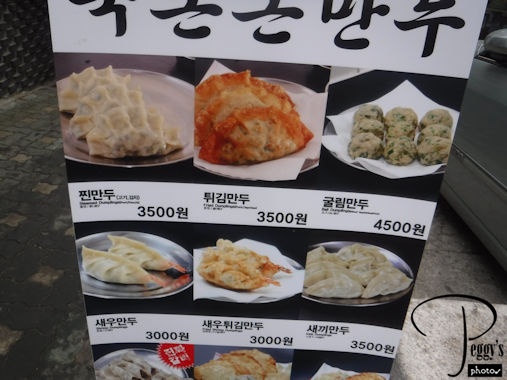
Korean food.

Insadong Street
Insadong Street
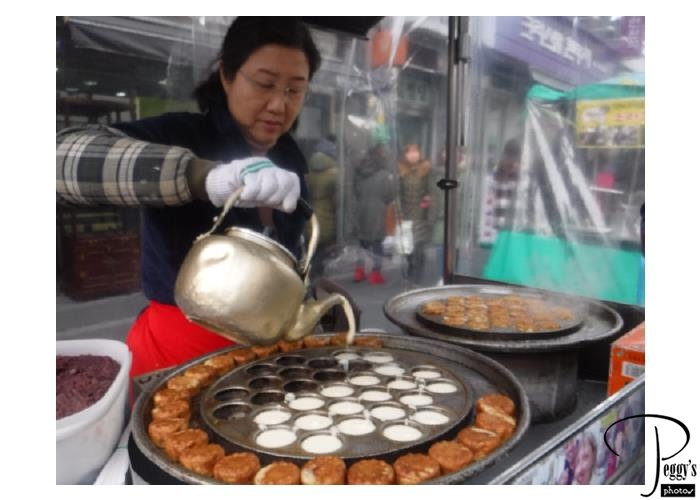
Street food.
I hailed a taxi to take me back to my hotel but the taxi driver said he couldn’t take me. All the taxis in Seoul have GPS, so I couldn’t figure out why he couldn’t put the hotel address on a card that I handed him into his GPS to find out where it was located. It was explained to me later that there are many older taxi drivers in the Insadong area and they cannot read the small print on a hotel card. This driver was an older one. The second taxi driver who I hailed could read the card and took me back to my hotel.
I have put my photos of Insadong Street on a slide show:
http://www.peggysphotos.com/insadong–seoul/
(Slide Shows, Asia, South Korea, “Insadong, Seoul”).

Insadong Street
Korean Food Tour
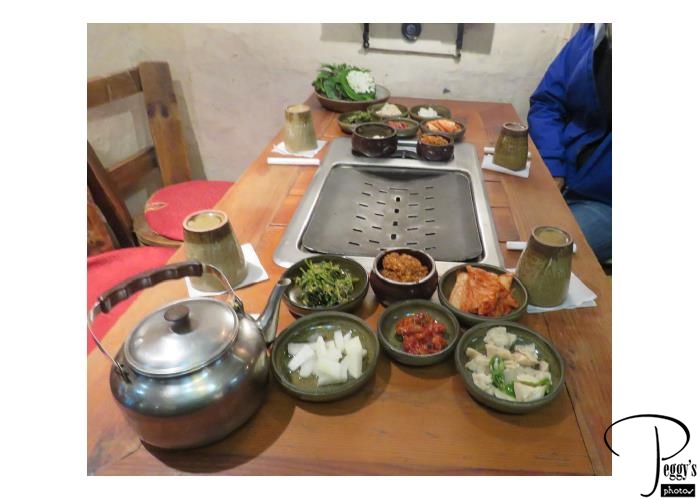
Because my JSA/DMZ tour was canceled, I was able to take a night Korean food tour that I had wanted to go on. The tour met at a cooking school. There were three of us on the tour plus our guide. My tour mates were a couple from Iowa whose last stop on a round–the–world ticket was Seoul. The young male of the couple had collected thousands of miles from his trips, at his own expense, to help out in orphanages throughout the world. He takes his mother along on these trips.
Our first stop was for a Korean barbecue, which was absolutely delicious. Beef was cooked on the barbecue in the middle and then you put the meat and the condiments in a sesame leaf (from the mint family, not from the sesame plant). Condiments included garlic, radishes, bean paste, squid, kimchi (fermented cabbage and other vegetables), and a vegetable salad.

Korean Food Tour
Korean Food Tour
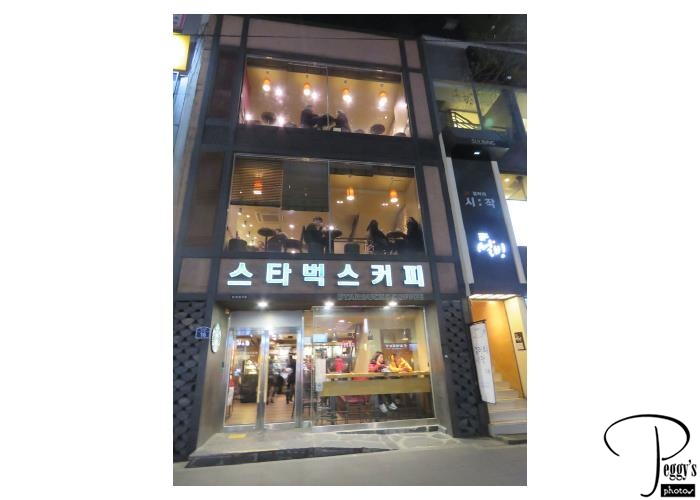
We walked along Insadong Street past this Starbucks. It is the only Starbucks in Korea where its name is in Korean characters. This is in keeping with the traditional nature of the street. In 2014, there were more Starbucks in Seoul than in any other city in the world. You see one Starbucks after another Starbucks after another. Coffee at the Starbucks is about twice the price as in the U.S. and it is a status symbol to walk around with a Starbucks cup in your hand.

Korean Food Tour
Korean Food Tour
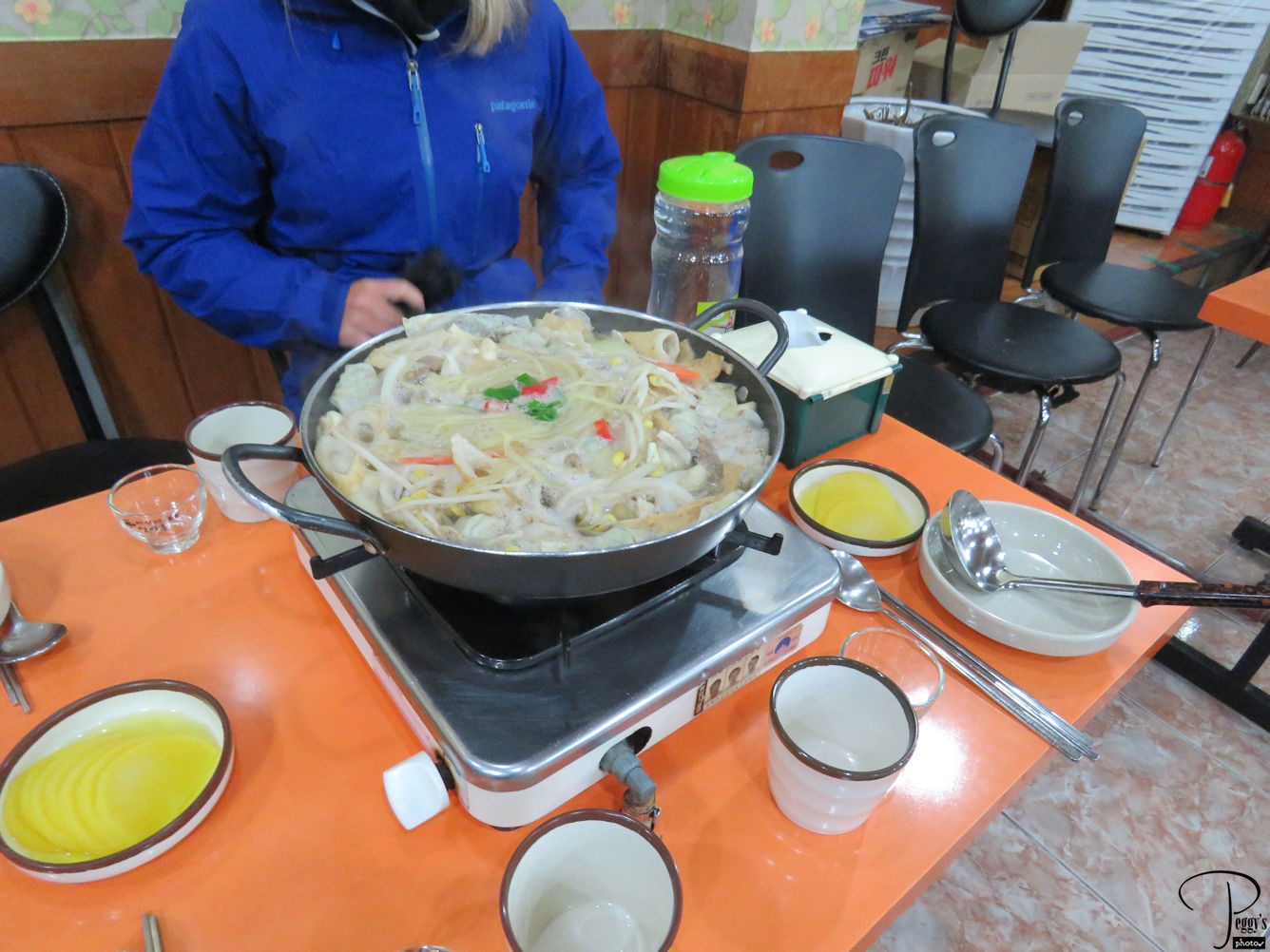
Our next stop was for rice cake toppoki.

Korean Food Tour
Korean Food Tour
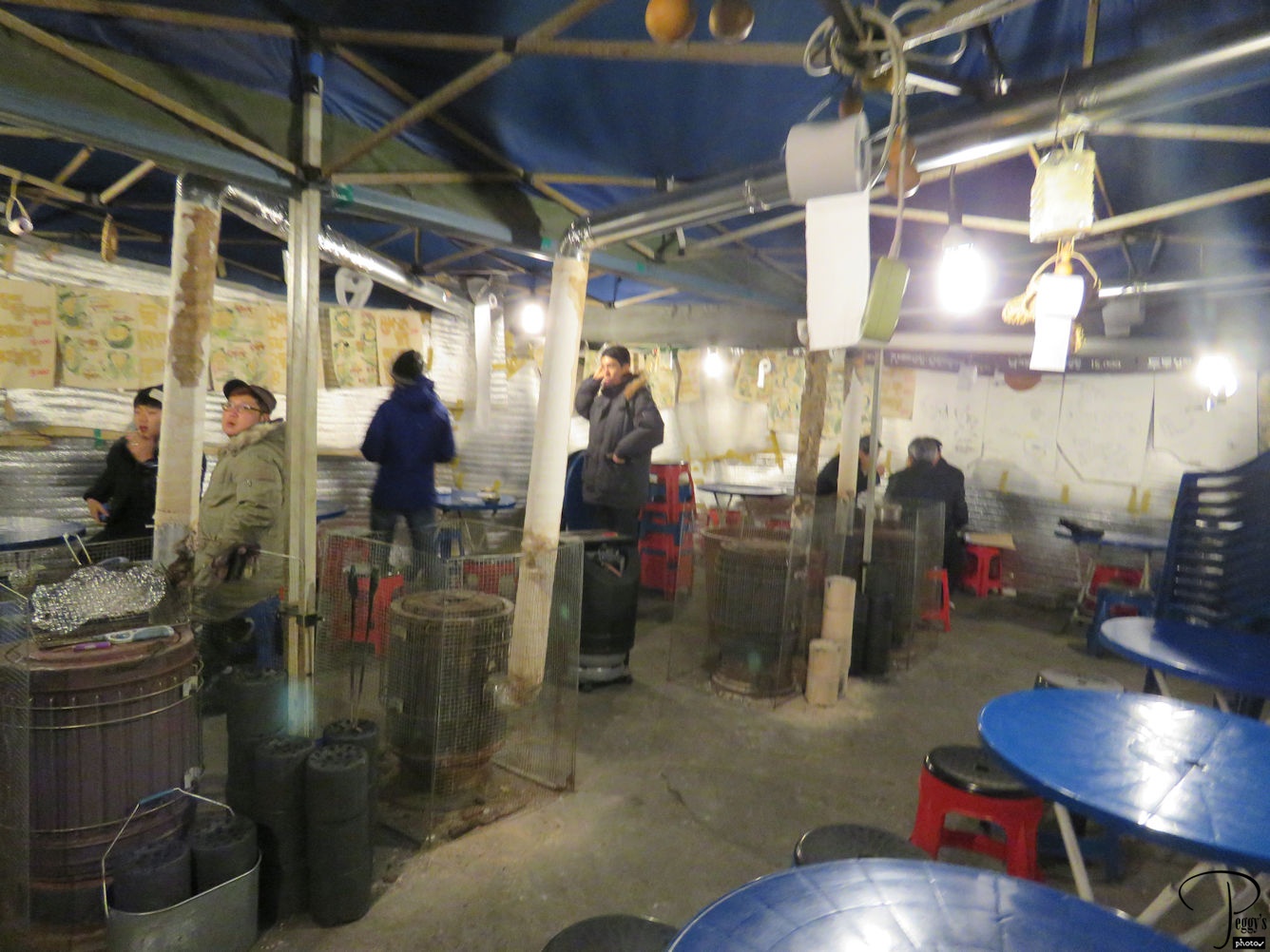
Then to a restaurant in a large tent with both cartoons on the wall and toilet paper used for napkins hanging from the ceiling.

Korean Food Tour
Korean Food Tour
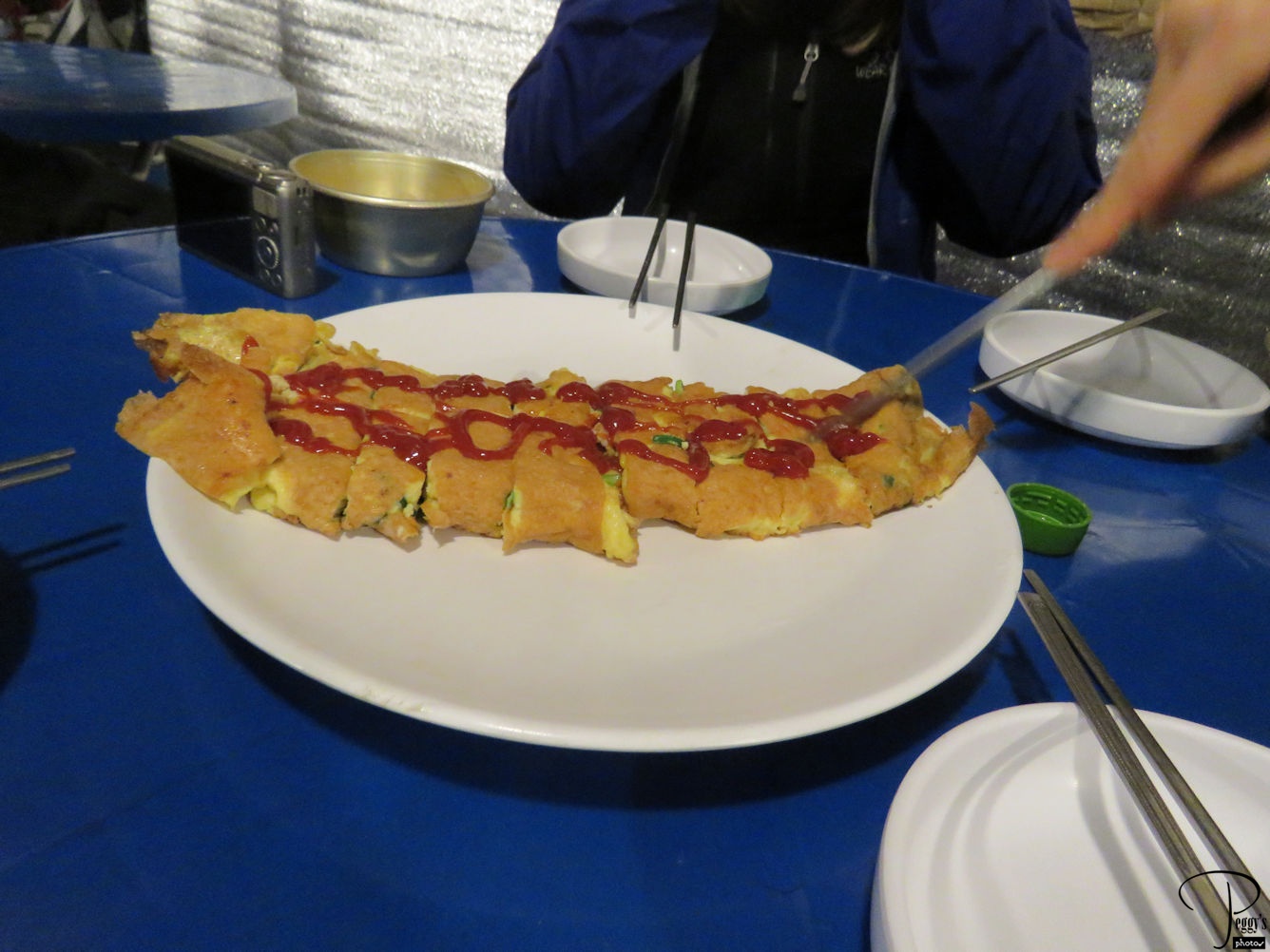
Here we had Korean egg roll and a ground beef dish.

Korean Food Tour
Korean Food Tour
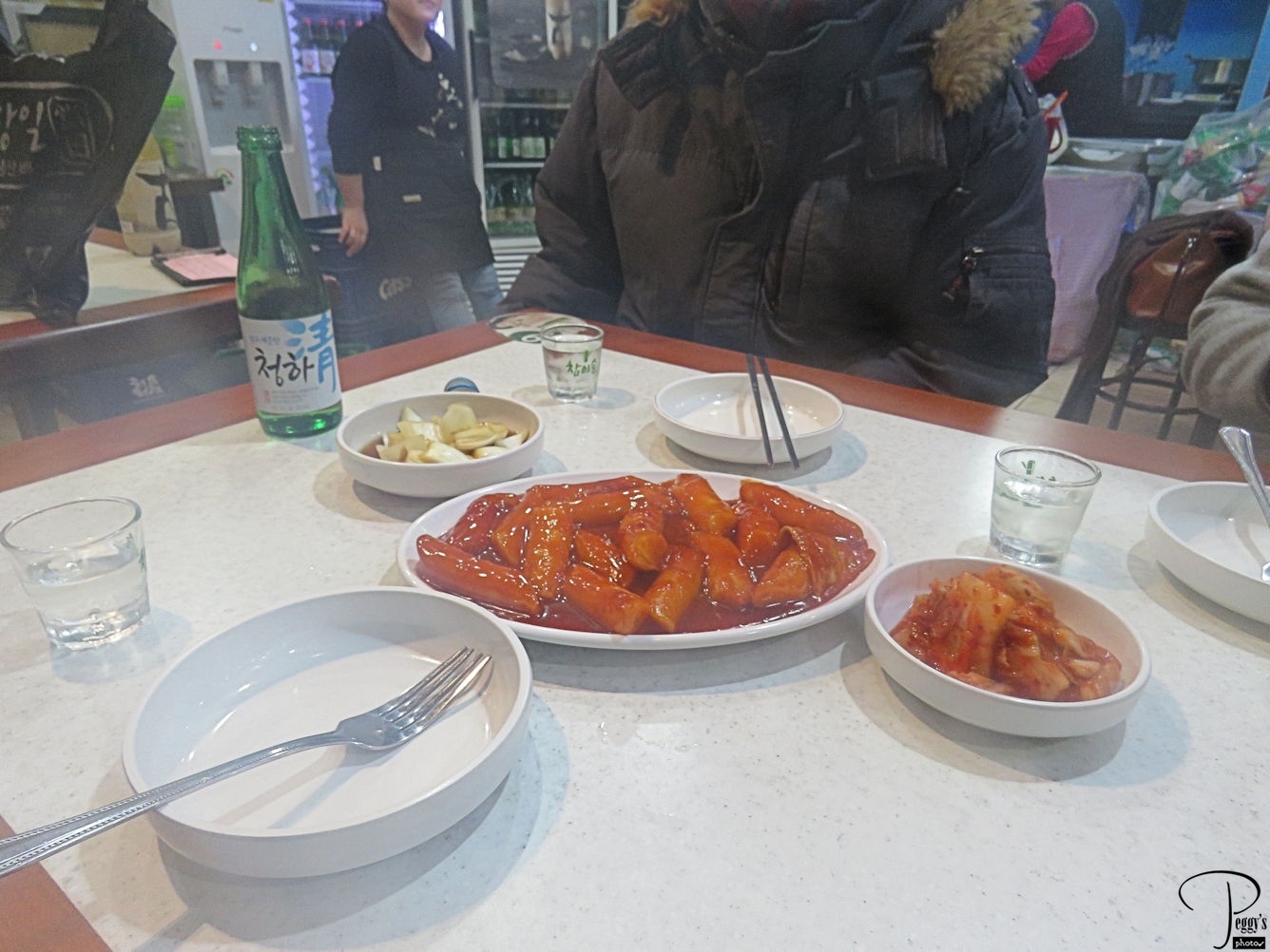
Our last stop was at a restaurant in a very large indoor market. Here we had Tteckbokki made of rice cake, fish cake, and sweet red chili sauce plus kimchi.

Korean Food Tour
Korean Food Tour
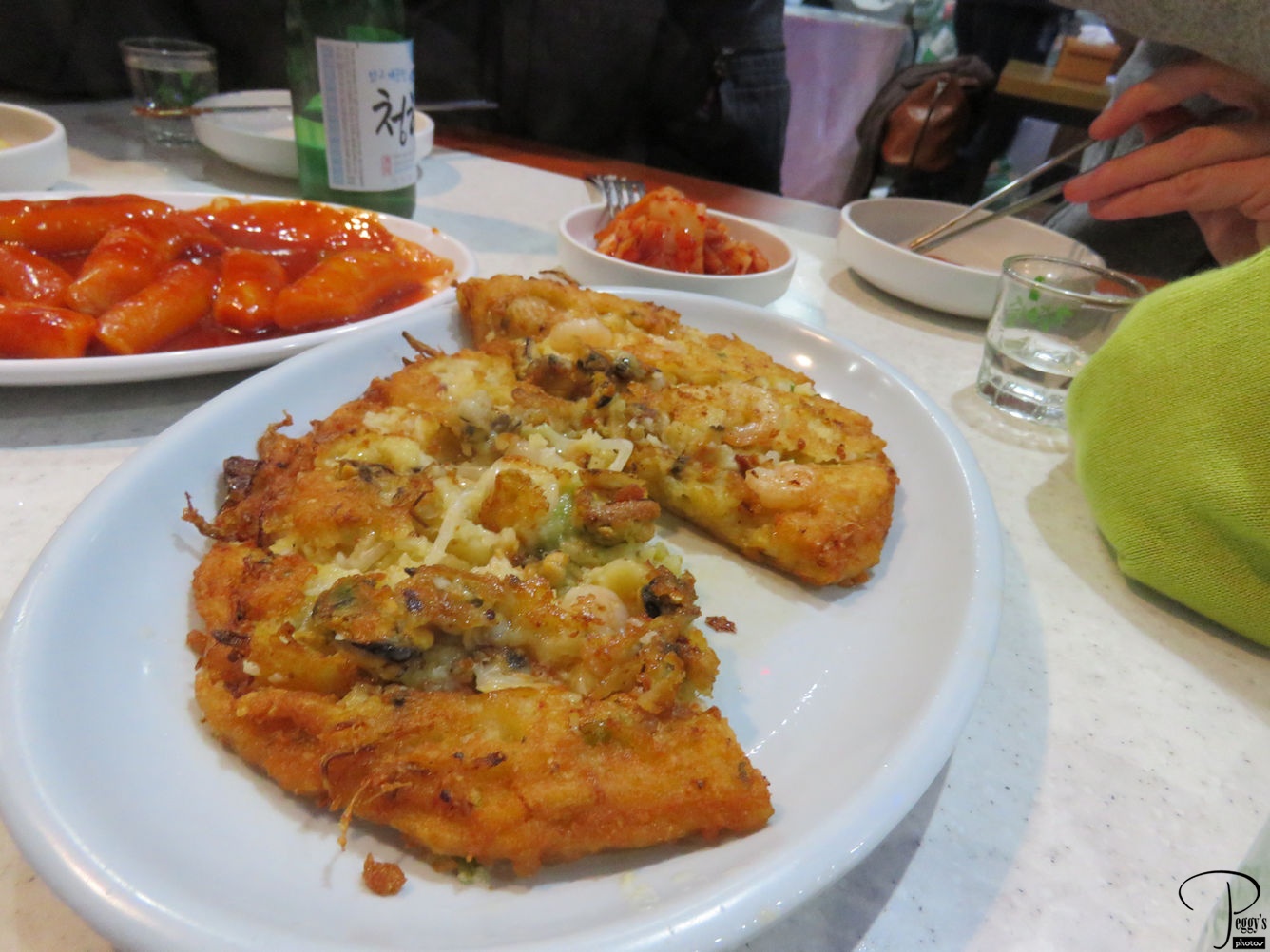
Also, served was a Korean shrimp pancake.
I have put my photos of the Korean food tour on a slideshow:
http://www.peggysphotos.com/korean–food–tour–seoul/
(Slide Shows, Asia, South Korea, “Korean Food Tour, Seoul”).

Korean Food Tour
Jogyesa Temple
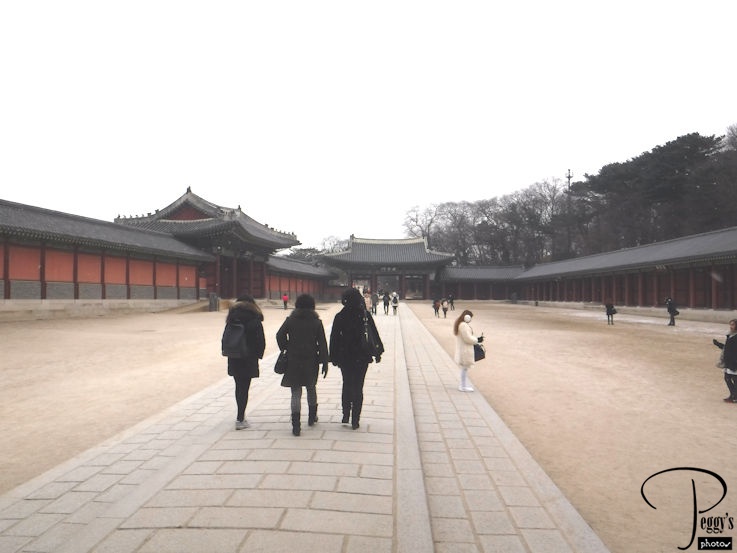
The next day, I took a Korean Palace and Temple day tour. My tourmates were two young men, one an American working in Canada and the other a Russian working in Israel. Both were in Seoul on business. Our guide was a young Korean woman.
Our first stop was at the Jogyesa Temple, the center of Korean Zen Buddhism. Photo: the Daeungjeon (Hall).

Jogyesa Temple
Jogyesa Temple
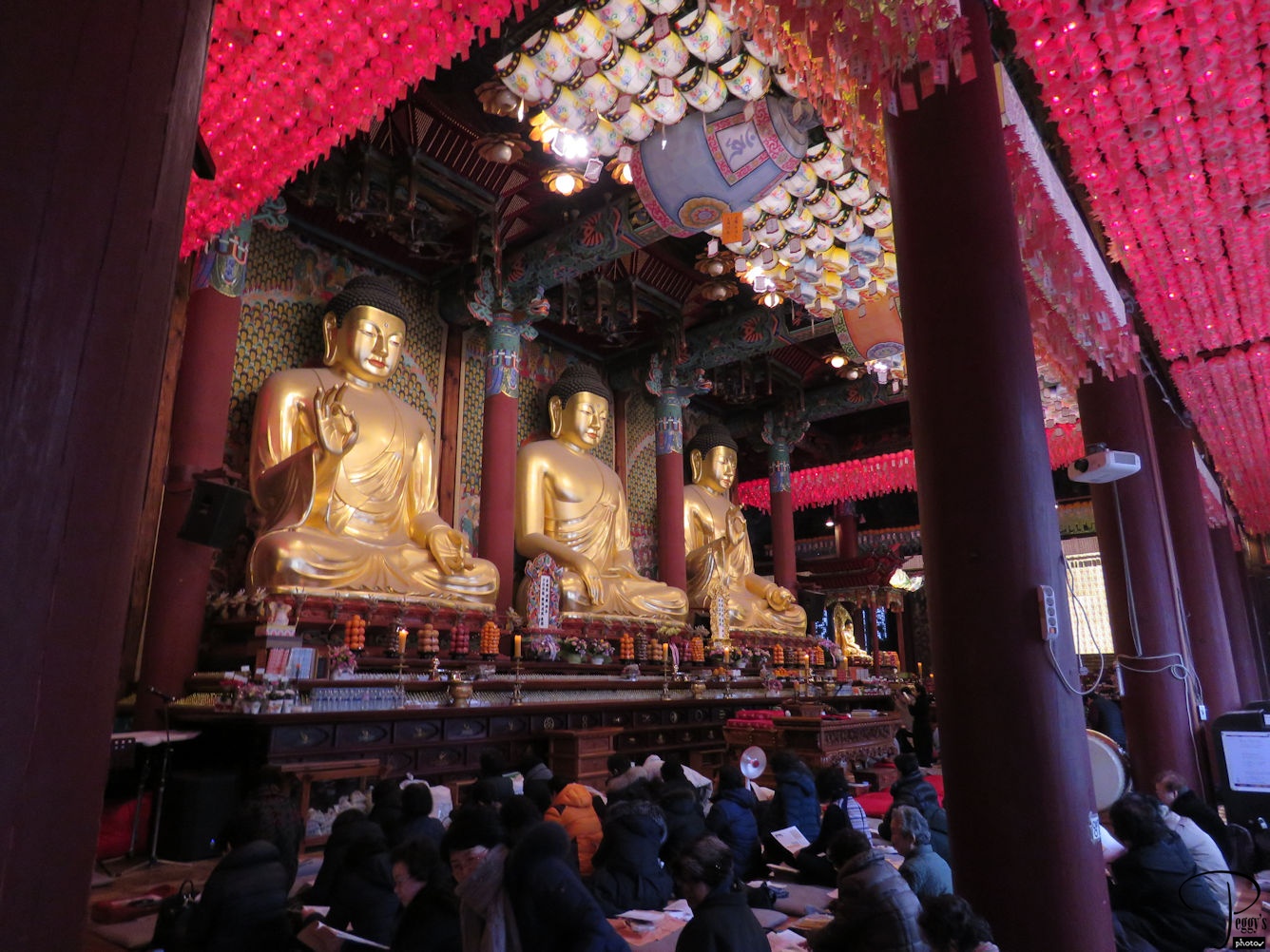
Inside the Daeungjeon.

Jogyesa Temple
Jogyesa Temple
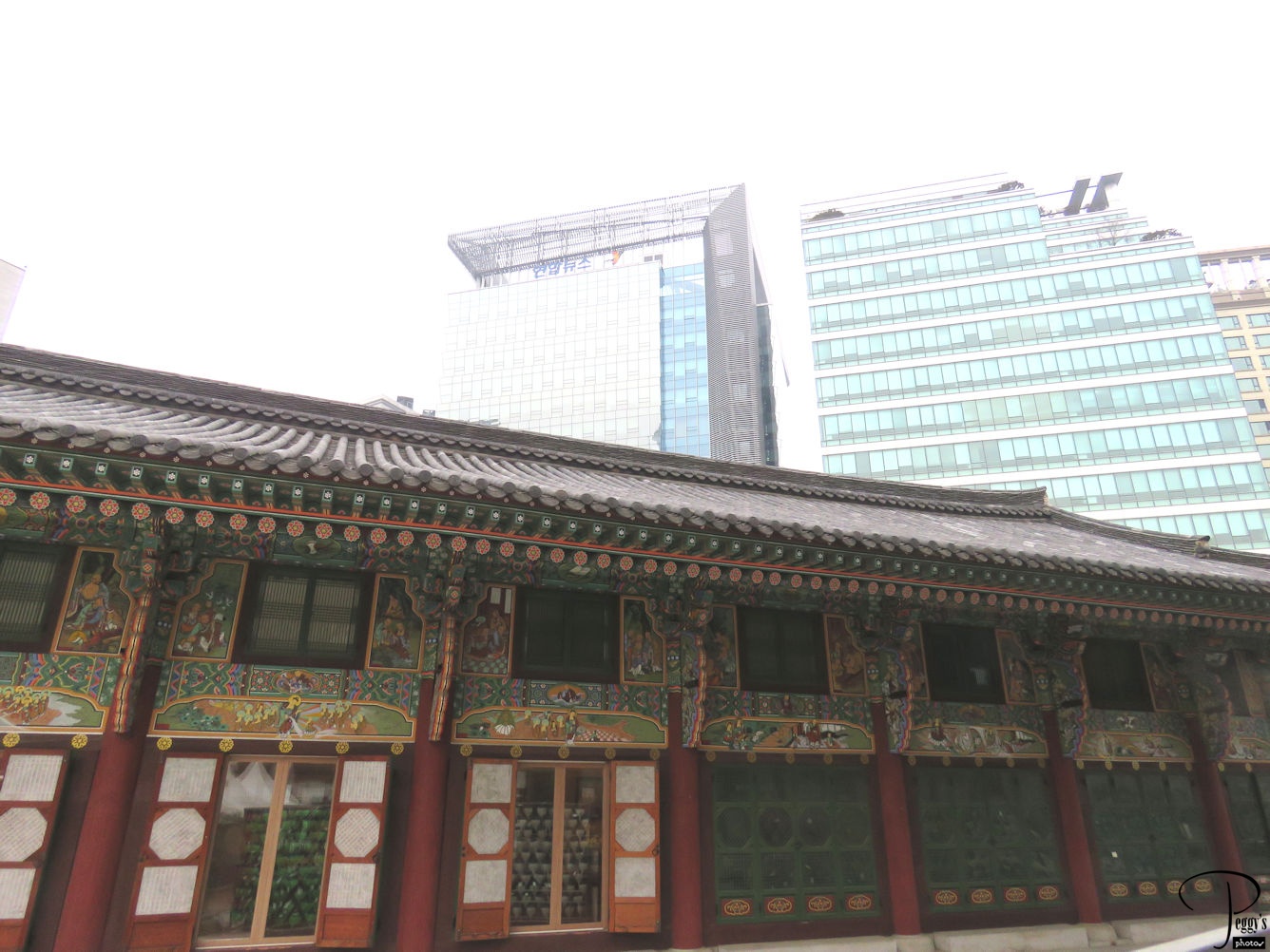
The Geuknakjen (Paradise Hall) at the temple.

Jogyesa Temple
Jogyesa Temple
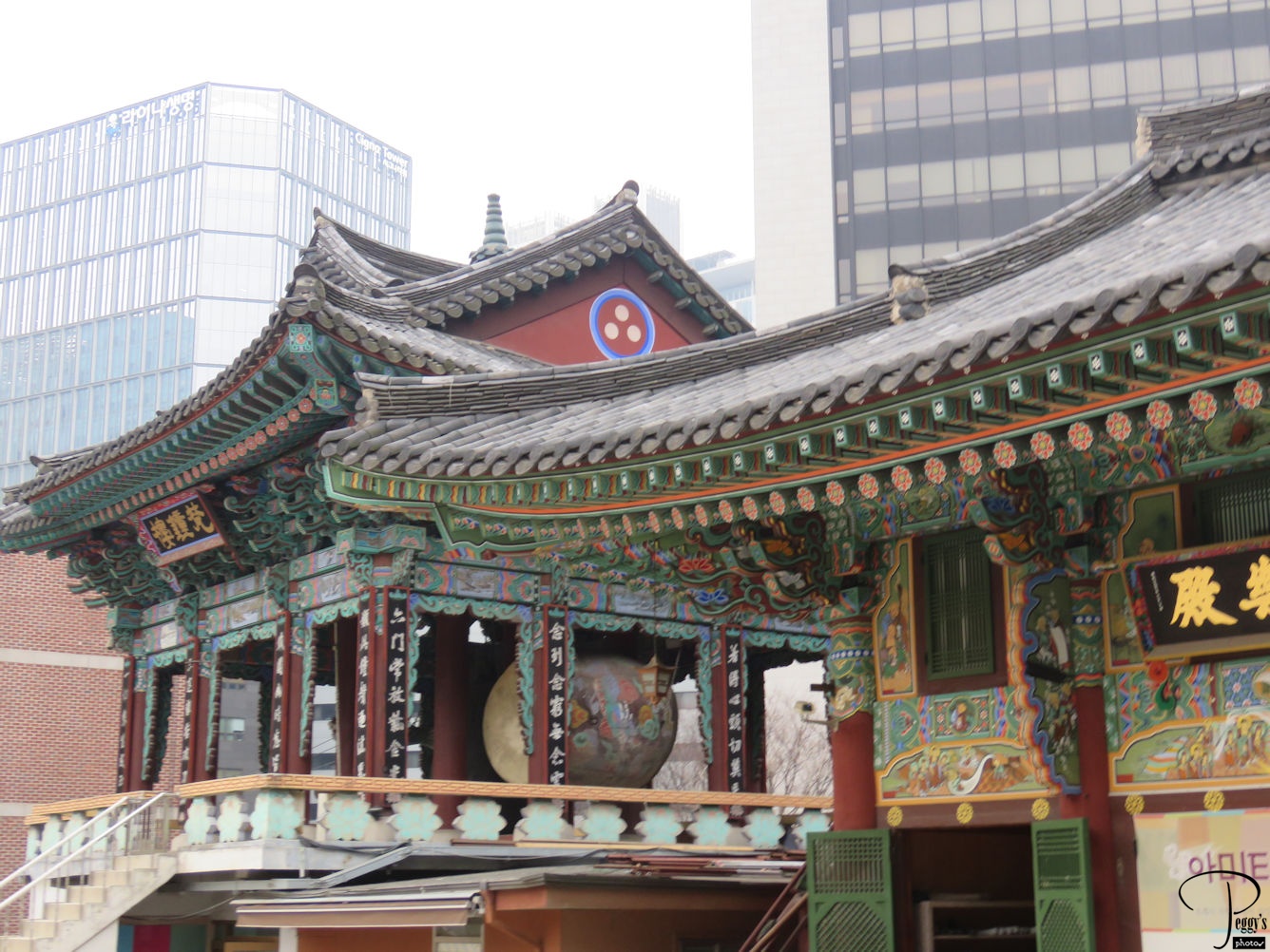
The Beomjongru (Brahma Bell Pavilion).
I have put my photos of the Jogyesa Temple on a slide show:
http://www.peggysphotos.com/jogyesa–temple–seoul/
(Slide Shows, Asia, South Korea, “Jogyesa Temple, Seoul”).

Jogyesa Temple
Gyeongbokgung Palace & Folk Art Museum
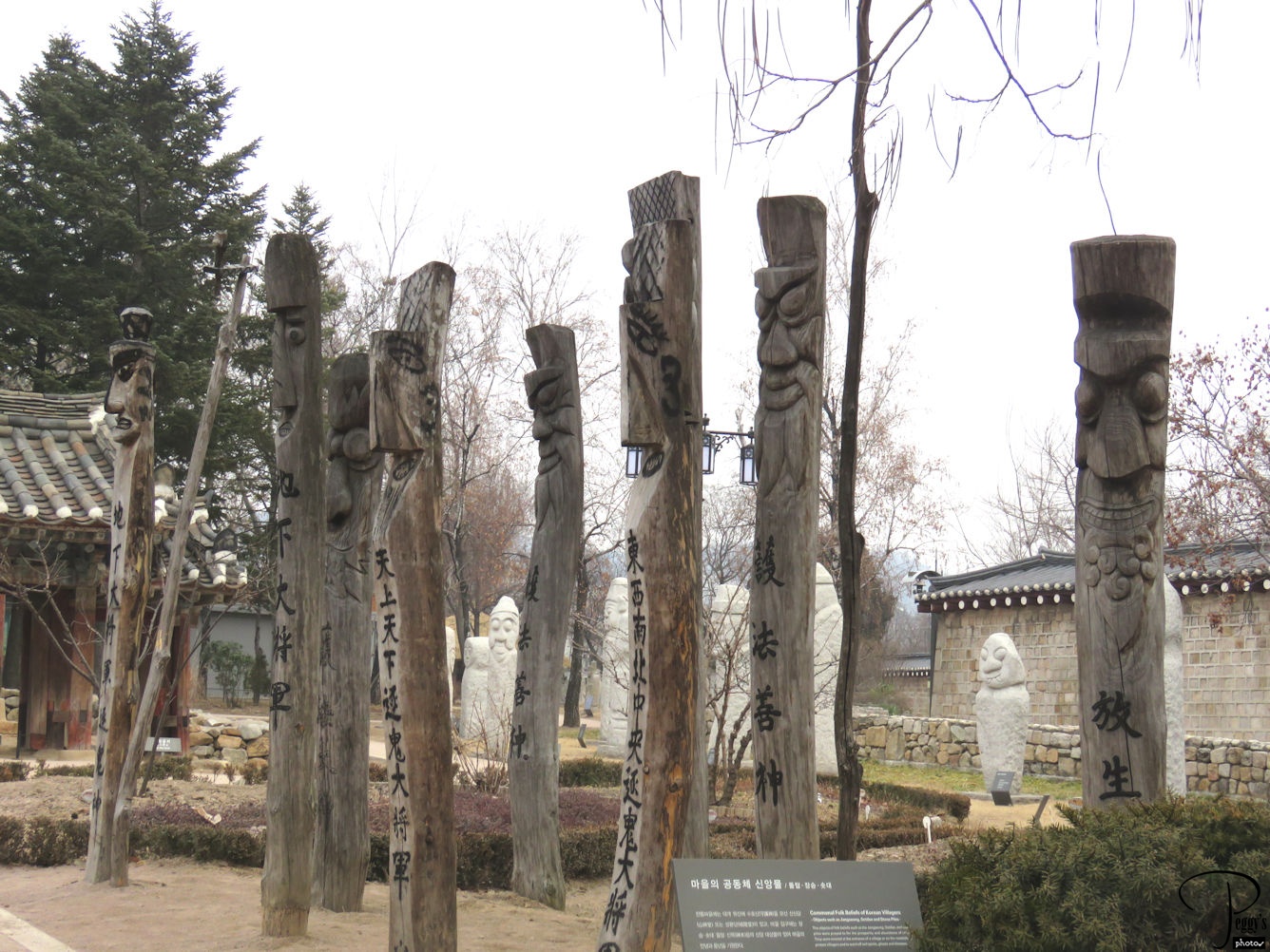
Our next stop was at the Gyeongbokgung Palace and the National Folk Museum of Korea. The museum is on the palace grounds and part of it is open–air. Photo: replicas of spirit posts where villagers used to pray.

Gyeongbokgung Palace & Folk Art Museum
Gyeongbokgung Palace & Folk Art Museum
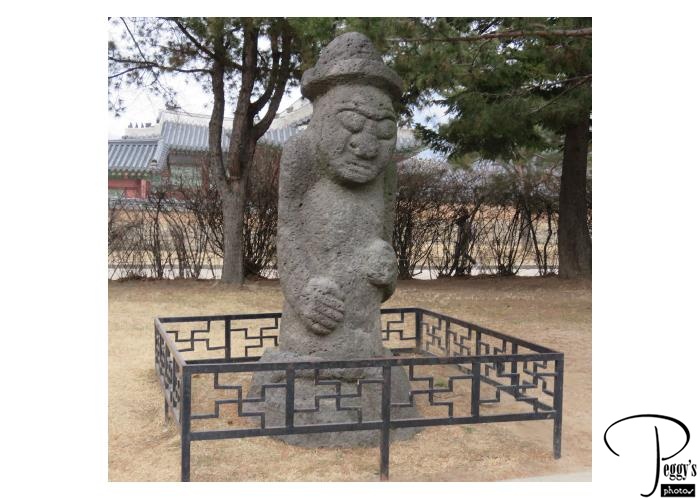
There were also many stone deity statues at the open–air museum.

Gyeongbokgung Palace & Folk Art Museum
Gyeongbokgung Palace & Folk Art Museum
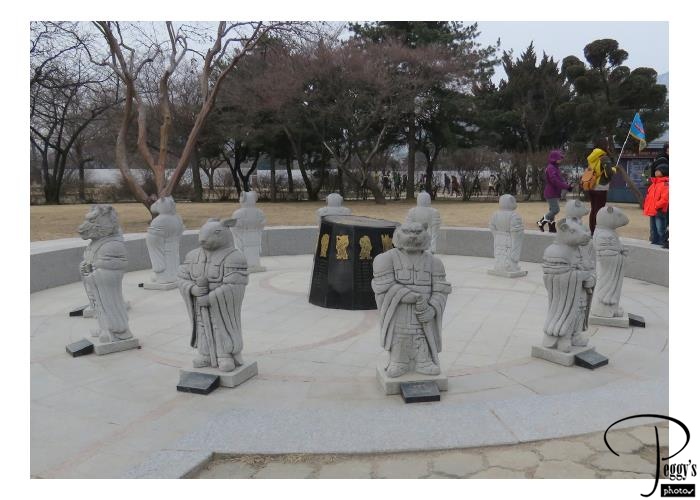
Also, statues representing the signs of the Zodiac.

Gyeongbokgung Palace & Folk Art Museum
Gyeongbokgung Palace & Folk Art Museum
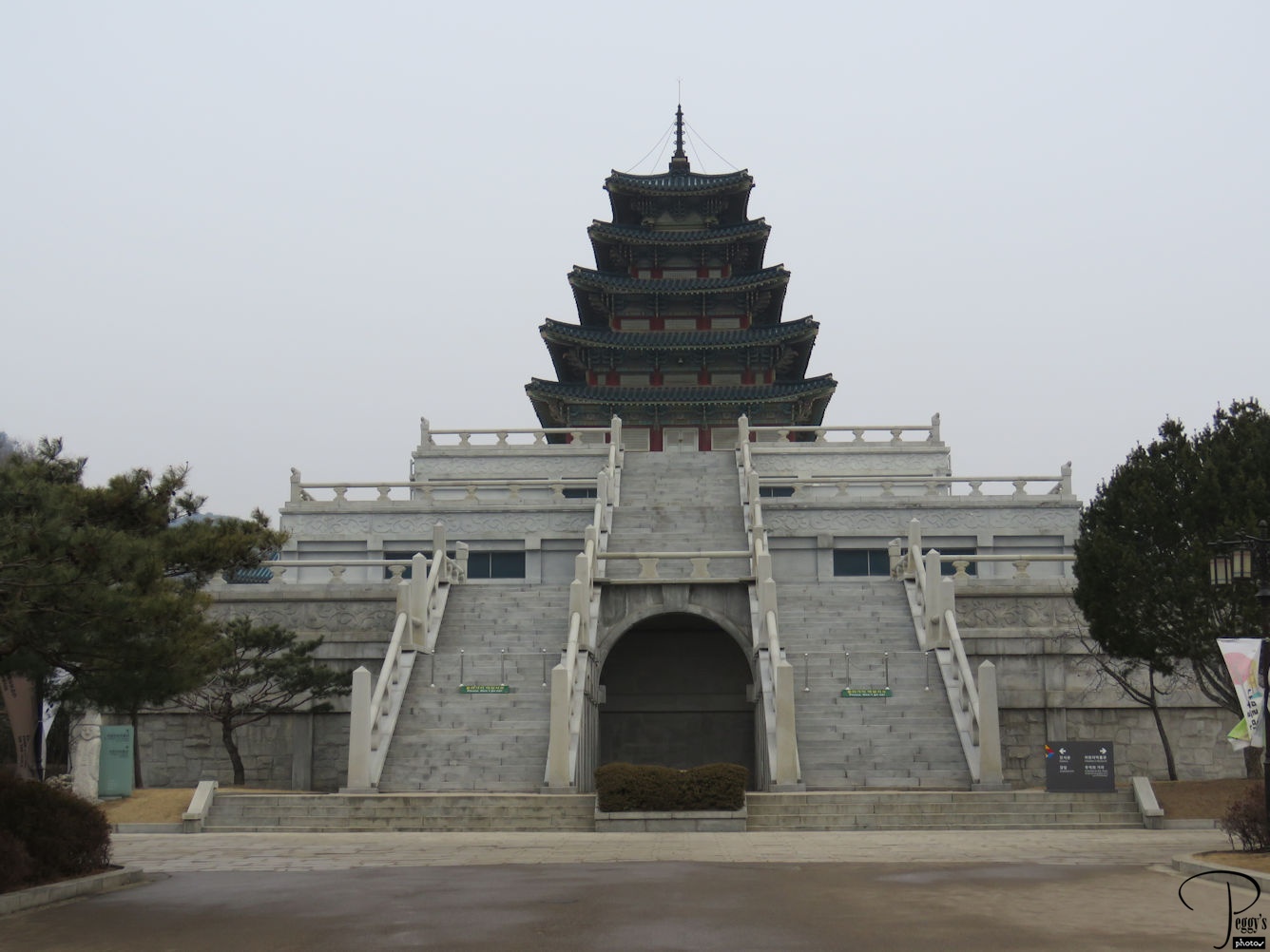
The inside part of the museum was in this impressive building.

Gyeongbokgung Palace & Folk Art Museum
Gyeongbokgung Palace & Folk Art Museum
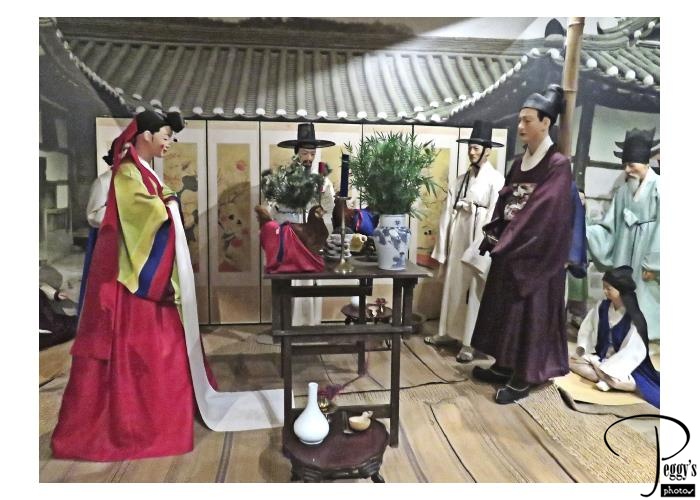
Inside the museum: a re–creation of a marriage ceremony in another era.

Gyeongbokgung Palace & Folk Art Museum
Gyeongbokgung Palace & Folk Art Museum
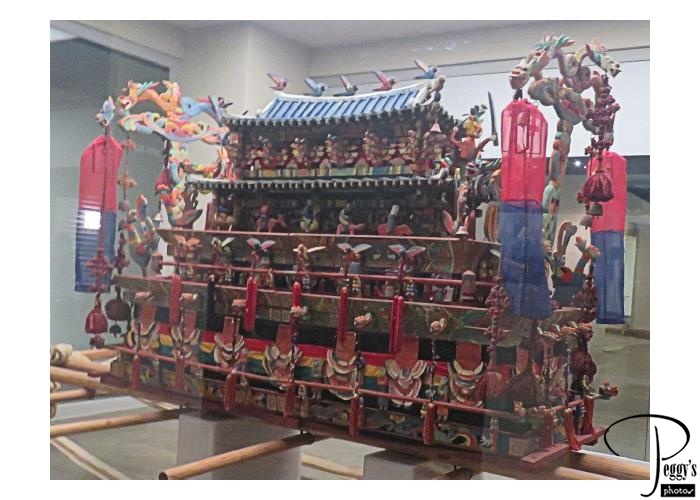
A bier––a frame or stand on which a corpse or a coffin is placed before burial.

Gyeongbokgung Palace & Folk Art Museum
Gyeongbokgung Palace & Folk Art Museum
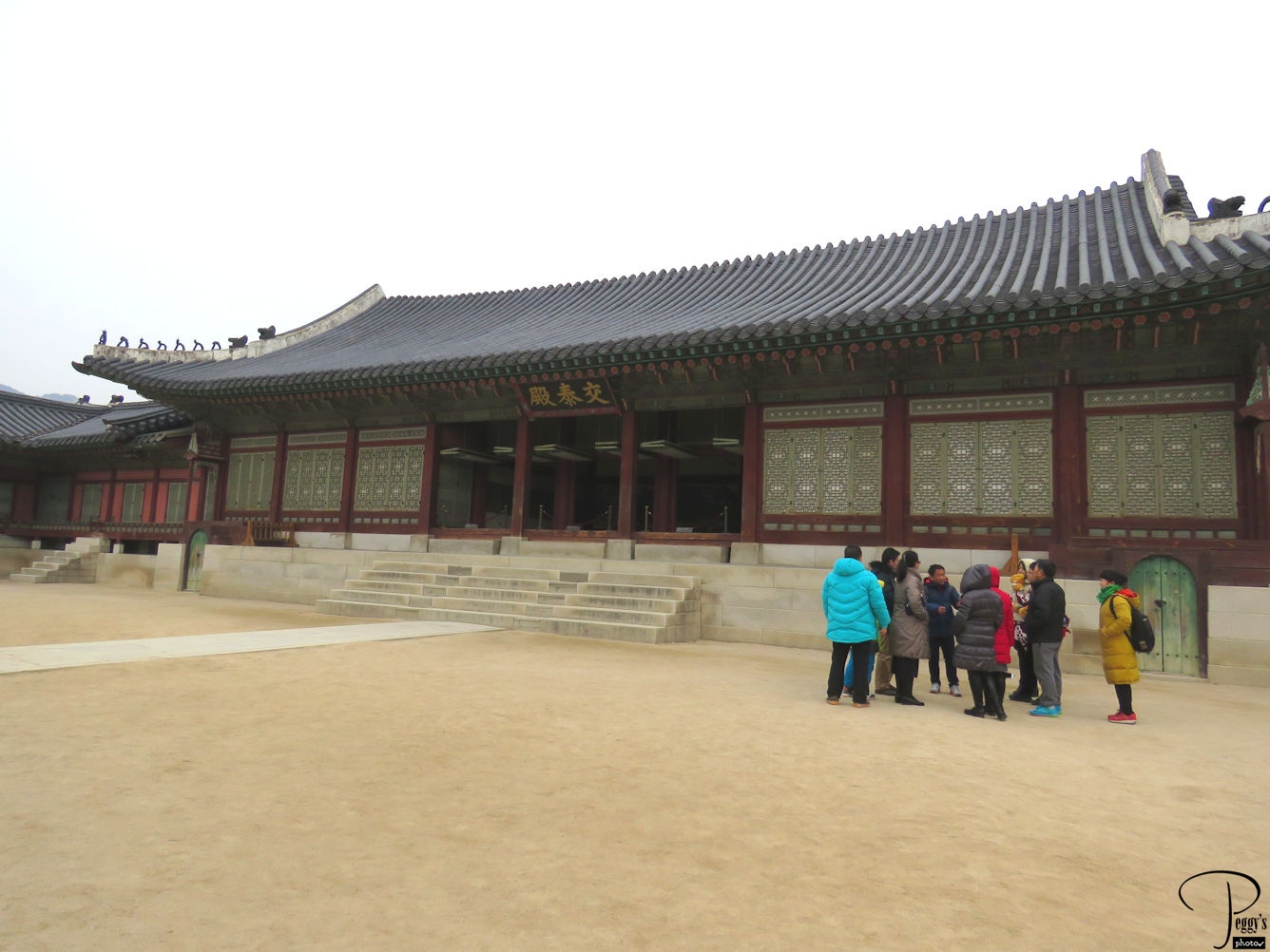
We next visited Gyeongbokgung Palace (Palace of Shining Happiness), built in 1394 but destroyed and rebuilt a number of times.

Gyeongbokgung Palace & Folk Art Museum
Gyeongbokgung Palace & Folk Art Museum
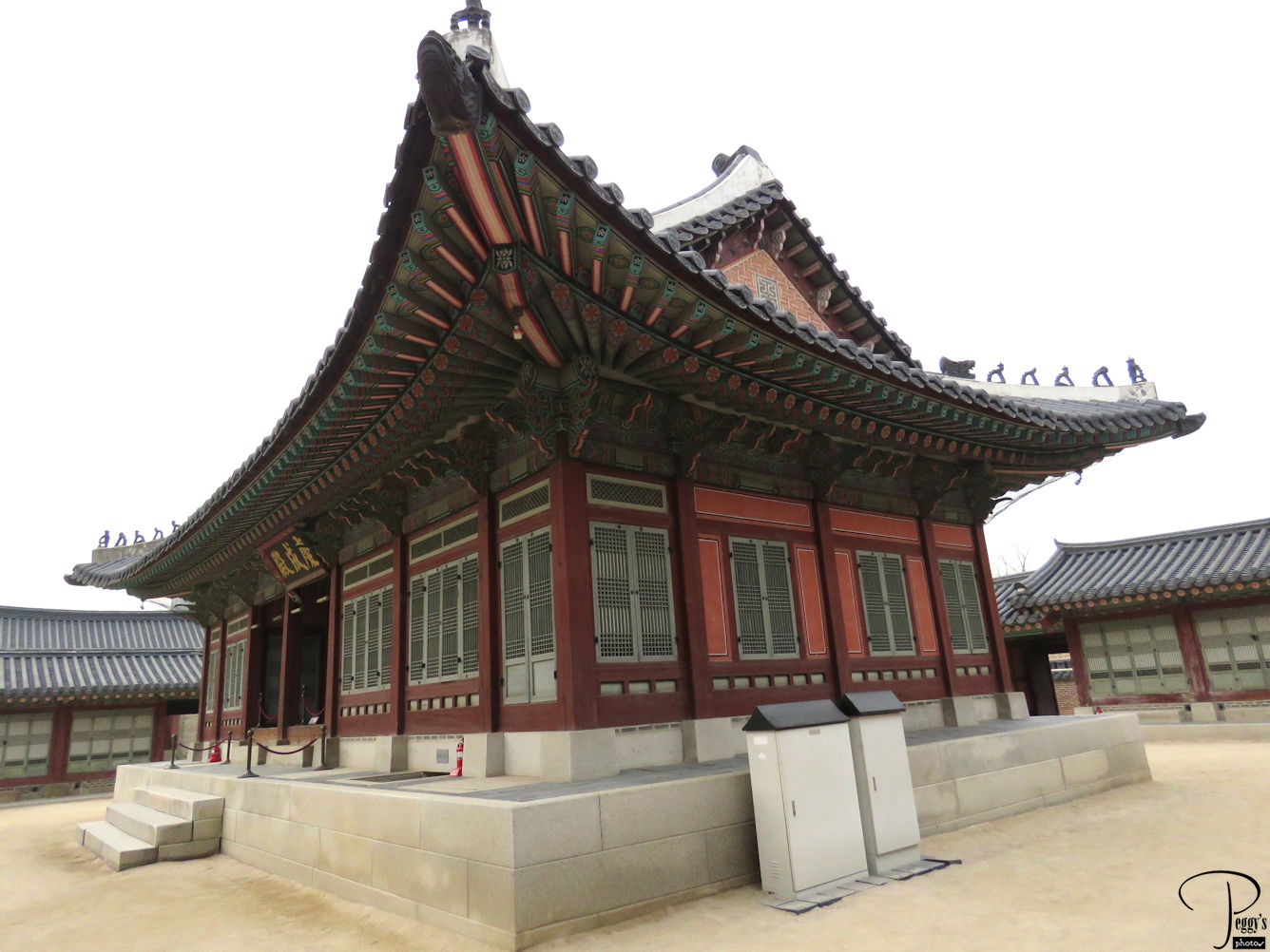
Jaseondang Hall, where the crown prince and princess lived. Built in 1427, rebuilt in 1999.

Gyeongbokgung Palace & Folk Art Museum
Gyeongbokgung Palace & Folk Art Museum
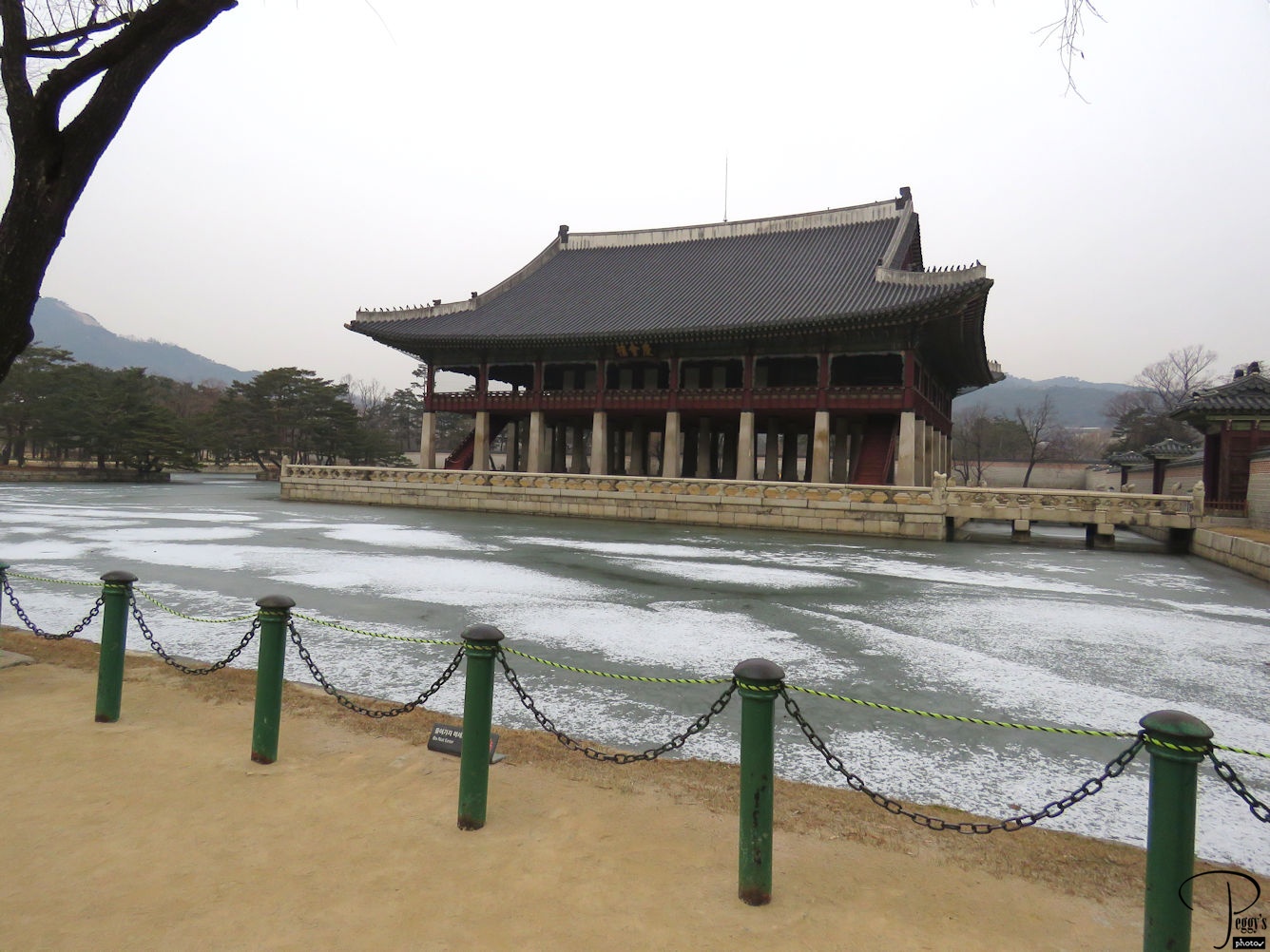
Gyeonghoeru Pavilion, built in 1412. Banquets and state meetings were held here. The lake, now frozen, was man–made.

Gyeongbokgung Palace & Folk Art Museum
Gyeongbokgung Palace & Folk Art Museum
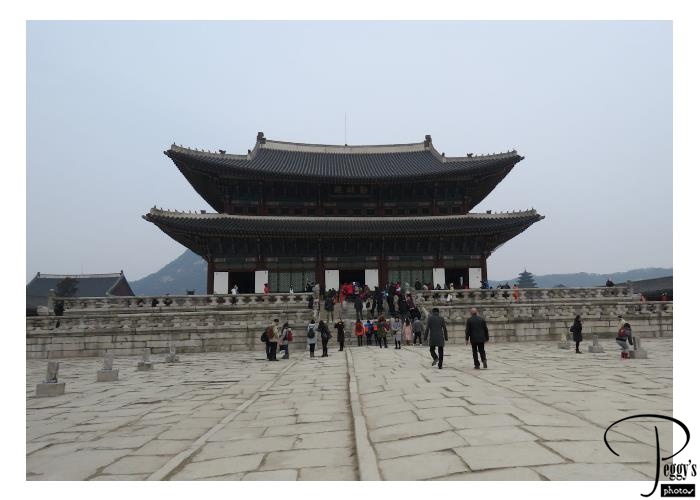
Geunjeongjeon Hall, the throne room.

Gyeongbokgung Palace & Folk Art Museum
Gyeongbokgung Palace & Folk Art Museum
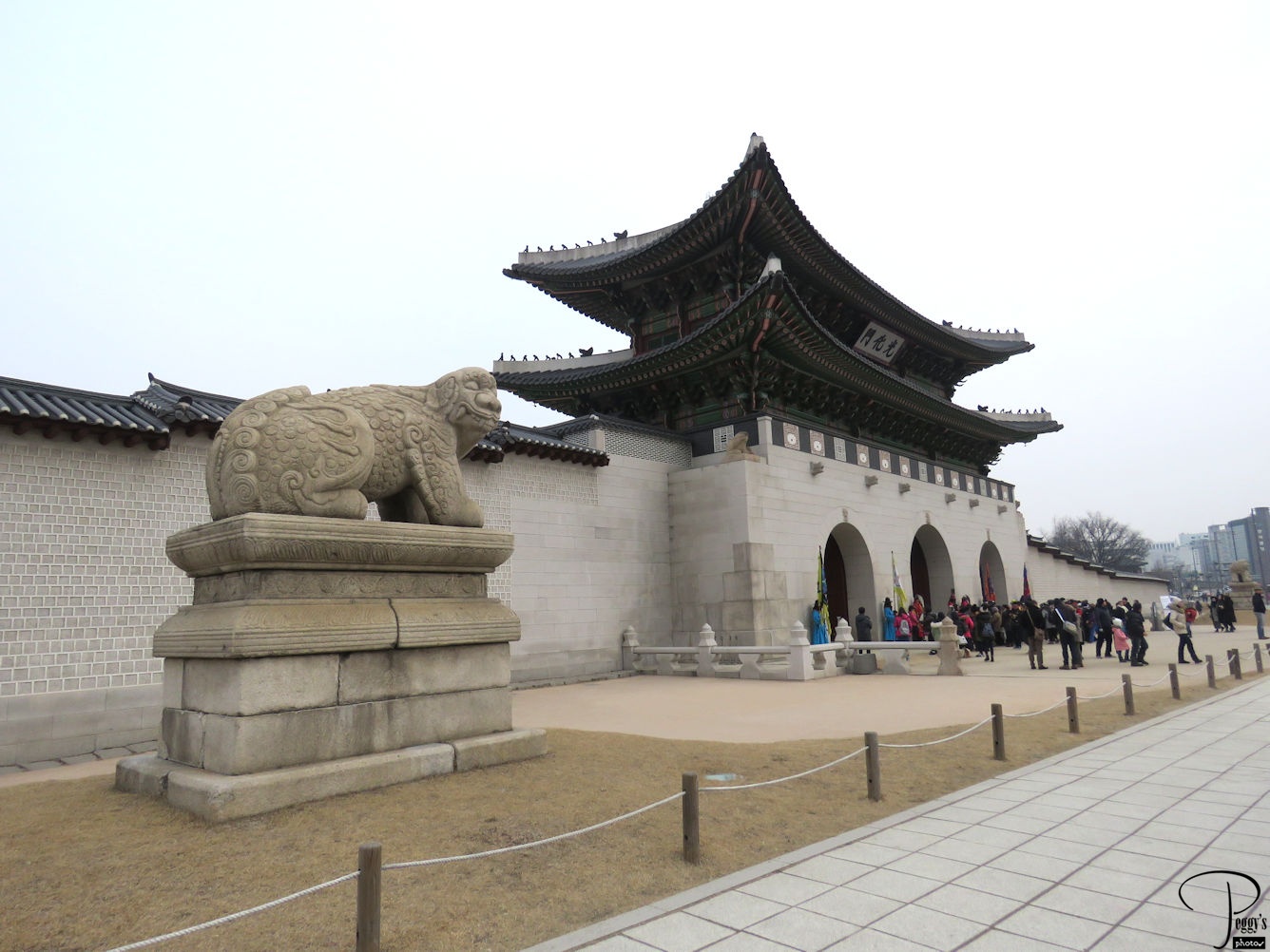
The Gwanghwamun Gate, the outer gate of the palace. The gate had been destroyed and rebuilt a number of times since its original date of 1398. The current gate was built in 2010.

Gyeongbokgung Palace & Folk Art Museum
Gyeongbokgung Palace & Folk Art Museum–MOVIE
Changing of the Guard ceremony at the Gwanghwamum Gate, the outer gate of the palace, a ceremony dating back to 1469.

Gyeongbokgung Palace & Folk Art Museum–MOVIE
Gyeongbokgung Palace & Folk Art Museum
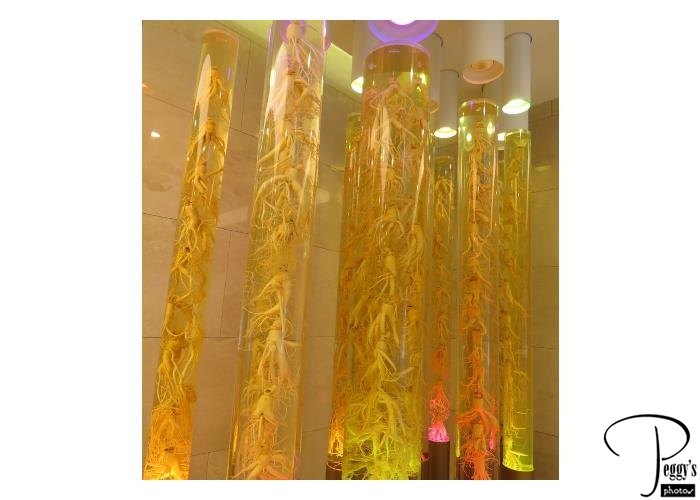
Our last stop on our tour was at a ginseng factory. No photos were allowed past the foyer. There were many displays touting how good ginseng is for you and also ginseng to buy.
My tour was over. My original plans were to see more of Seoul but sudden jet lag changed my mind and I went back to my hotel.
I have put my photos of the Gyeongbokgung Palace and the National Folk Museum of Korea on a slideshow:
http://www.peggysphotos.com/gyeongbokgung–palace–folk–art–museum–seoul/
(Slide Shows, Asia, South Korea, “Gyeongbokgung Palace & Folk Art Museum, Seoul”).

Gyeongbokgung Palace & Folk Art Museum
Myeongdong
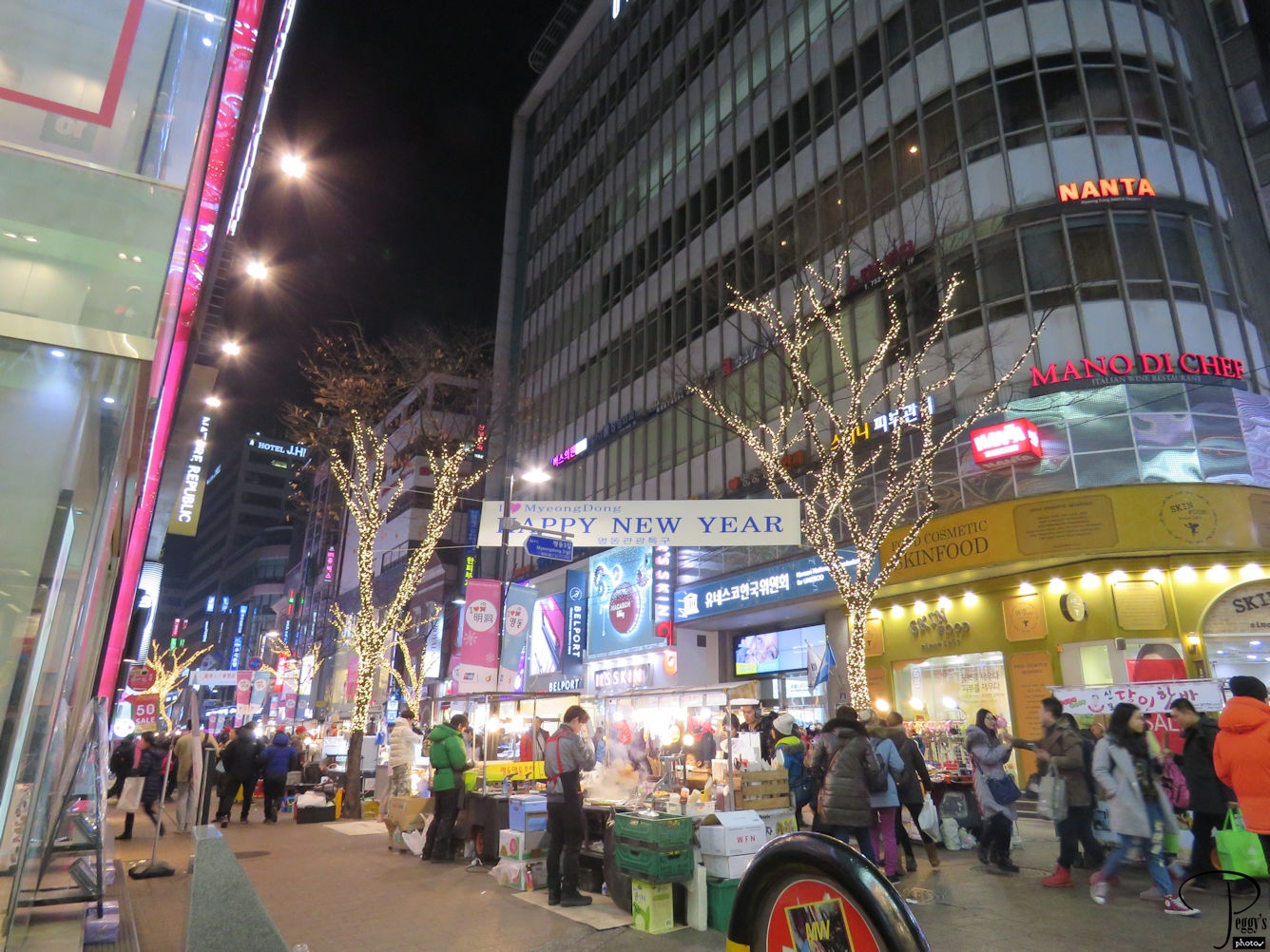
At night, I took a walk around the Myeongdong 2–gil area where my hotel was located, an area with a night market and many restaurants, street vendors, and stores. Photo: the area at night.

Myeongdong
Myeongdong
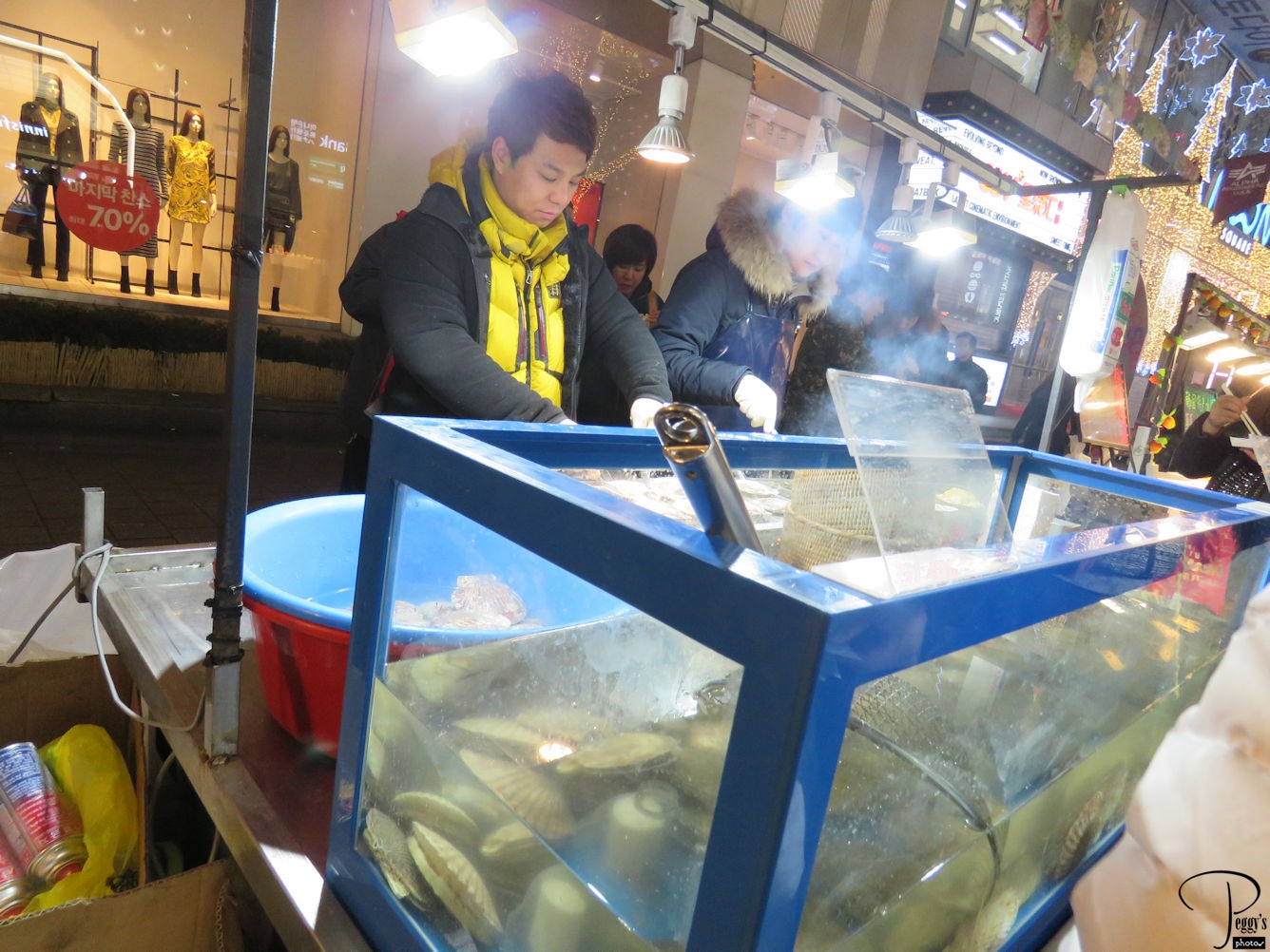
Street vendor selling oysters.

Myeongdong
Myeongdong
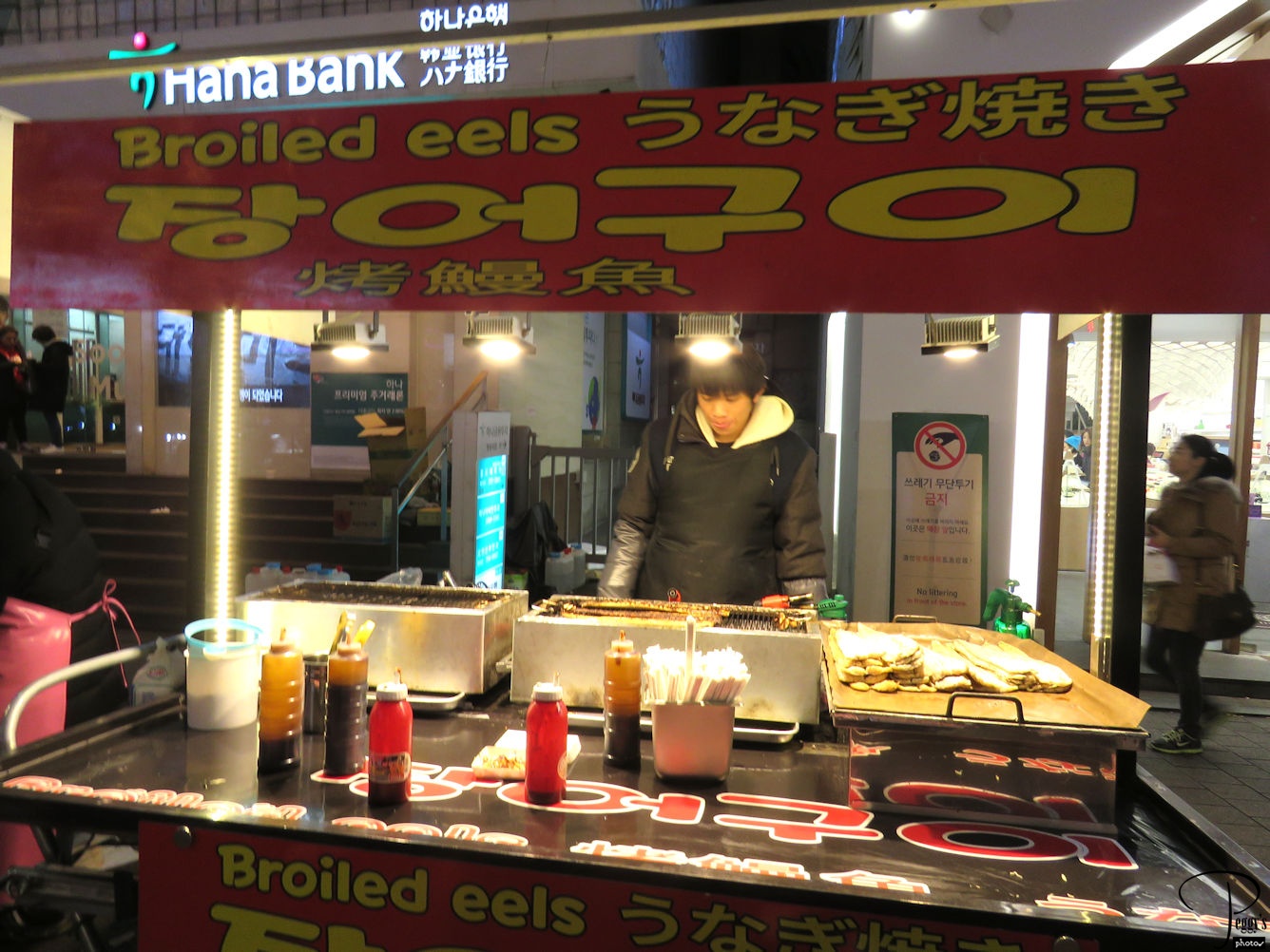
Broiled eels.

Myeongdong
Myeongdong
Curly potato chips on a stick.
I have put my photos of Myeongdong on a slide slide:
http://www.peggysphotos.com/myeongdong–seoul/
(Slide Shows, Asia, South Korea, “Myeongdong”).
I was picked up a 5 a.m. the next day by my international taxi to go to the airport. I flew from Seoul to Bangkok, a 5–hour 45–minute flight. I had arranged for a shuttle to take me from the Bangkok airport to Pattaya, on the water, about a two–hour drive.